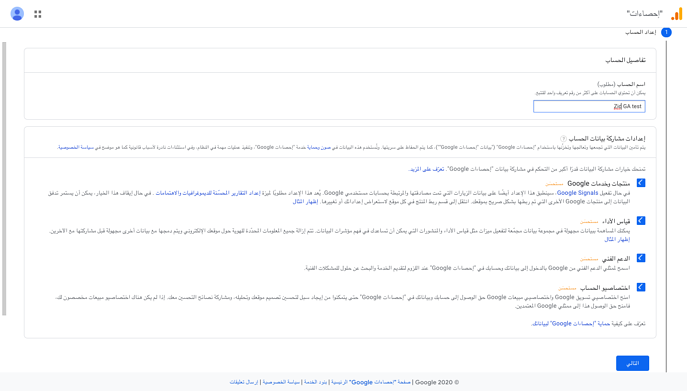ت
الإنترنت
1 min read
سمعنا في الفترة الأخيرة عن تطبيقات الويب التقدمية (Progressive Web Apps) واختصارها هو الرمز PWA، هذه التطبيقات عبارة عن تطبيقات انترنت يتم الاستفادة م...
سمعنا في الفترة الأخيرة عن تطبيقات الويب التقدمية (Progressive Web Apps) واختصارها هو الرمز PWA، هذه التطبيقات عبارة عن تطبيقات انترنت يتم الاستفادة منها على الشاشة الرئيسية لجميع هواتف المحمول، وسوف نتطرق للحديث عن تطبيقات الويب التقدمية بالتفصيل على موقع إنجيشوب.
اقرأ أيضا: كيفية اختيار منصة التواصل الاجتماعي المناسبة لعملك؟
تطبيقات الويب التقدمية (Progressive Web Apps)
- تطبيق الويب التقدمي ليس تقنية JavaScript أو إطار عمل جديد.
- بل هي مجموعة من الممارسات الجيدة والميزات التي يجب أن تكون متوفرة في تطبيق الويب لتكون مشابهة لتطبيقات الهاتف المحمول الأصلية التي استخدمناها للتنزيل من متجر Play لهواتف Android ومتجر التطبيقات لهواتف وأجهزة Apple.
- الهدف هو منح مستخدمي تطبيقات الويب تجربة مماثلة لتجربة التطبيقات الأصلية.
- من المفترض أن يعمل هذا النوع من التطبيقات بشكل جيد في جميع الأجهزة ، بكل ميزاتها وإمكانياتها التقنية.
- على سبيل المثال، قد لا تتوفر بعض الميزات والوظائف في بعض الهواتف أو الأجهزة القديمة.
- لكن يجب التأكد من أن التطبيق يستمر في العمل بشكل جيد ، خاصة من حيث الأداء والسرعة.
متى نقول بأن تطبيق الويب تقدمي ؟
كما قلنا في البداية ، فإن PWAs هي مجرد تطبيقات ويب مكونة من CSS و HTML و JavaScript ، وبالطبع تعمل في المتصفحات. ولكن ما يميزه عن الآخرين هو مجموعة من المزايا والنقاط التي نجدها بشكل جماعي فقط في عدد قليل من تطبيقات الويب ، ولن نتمكن من إنشاء تطبيق ويب تقدمي إلا إذا كنا على دراية كاملة بهذه النقاط أو المبادئ.تطبيقات PWA الآمنة
تعمل PWAs مع عدد من واجهات المستعرض الأصلية ، وتعمل هذه التقنيات فقط على الصفحات والمواقع التي يتم تقديمها عبر بروتوكول https لحماية المستخدمين من هجمات man-in-the-middle التي تستهدف بياناتهم الحساسة. بشكل عام ، أصبح استخدام بروتوكول HTTPS شيئًا موصى به بشدة من قبل كل مالك موقع ويب ، وحتى محرك البحث Google قرر منذ فترة اعتماده كأحد معايير تصنيف نتائج البحث.تطبيقات الويب التقدمية المستجيبة
يجب أن يستجيب تطبيق الويب التدريجي لجميع أنواع وأشكال الأجهزة. يجب أن يكون التعامل مع واجهة المستخدم سهلاً ومتاحًا للمستخدمين بغض النظر عن حجم الشاشة التي يفتحون التطبيق عليها.تطبيقات تعمل حتى في حالة عدم وجود اتصال بالإنترنت
- في تطبيقات الهاتف المحمول الأصلية ، يمكننا فتح التطبيق ورؤية الأجزاء الرئيسية لواجهة المستخدم (الشريط العلوي على سبيل المثال) حتى لو لم يكن الجهاز متصلاً بالإنترنت.
- لا شك أنك حاولت قبل الدخول إلى تطبيق Facebook أو Twitter بدون اتصال.
- ومع ذلك ، لاحظت أن التطبيق يعرض المحتوى القديم الذي تم تخزينه في ذاكرة التخزين المؤقت.
- هذه التجربة هي ما تسعى تطبيقات الويب التقدمية إلى محاكاته ، ووسائلها لتحقيق ذلك هي ما يُعرف باسم عمال الخدمة.
- باختصار ، العاملون في الخدمة عبارة عن رمز أو برنامج نصي يعمله المتصفح في الخلفية ومنفصل عن صفحة الويب (لا يمكنه الوصول إلى DOM).
- تُستخدم هذه الميزة في وظائف تطبيقات الويب التقدمية التي لا تحتاج إلى تفاعل مباشر مع المستخدمين.
تطبيقات الويب التقدمية القابلة للتثبيت
الهدف الرئيسي من إنشاء تطبيقات ويب تقدمية هو تمكين المستخدمين من فتحها من الشاشة الرئيسية للهاتف. مامًا كما يفعلون مع التطبيقات المحلية. للوصول إلى هذا الهدف ، يجب عليك إضافة ملف Web Manifest إلى التطبيق. وهو ملف JSON يحتوي على مجموعة من المعلومات المتعلقة بالتطبيق مثل الرمز والاسم واتجاه الشاشة.تطبيقات الويب التقدمية السريعة
- من المفترض أن تكون هذه التطبيقات سريعة جدًا ، خاصة أثناء التنزيل.
- وفقًا لـ Google ، يغلق حوالي 53٪ من المستخدمين أي موقع ويب يستغرق تحميله أكثر من 3 ثوانٍ.
- لذا يجب أن تكون السرعة وخفة الحركة في التطبيق هدفًا رئيسيًا وشغلًا رئيسيًا أثناء بناء تطبيقات الويب الحديثة.
- من خلال تحسين سرعة تحميل الموقع فقط ، تمكنت الشركات والمواقع الكبرى من زيادة عدد الجلسات لكل زائر ، مما يعني تقليل معدل ارتداد الزوار.
- وبالتالي ، تم رفع معدل التحويل بمعدلات وصلت في كثير من الحالات إلى 10٪ إلى 15٪.
- هذه المهمة ليست سهلة ، خاصة إذا كان التطبيق كبيرًا.
- يجب استخدام عدد من التقنيات مثل Webpack لتقسيم شفرة المصدر عند الطلب أو ما يعرف بتقسيم الكود.
- تمت صياغة نمط Google المسمى نمط PRPL كخريطة طريق لبناء تطبيقات ويب تقدمية عالية الأداء.
تطبيقات PWA كل صفحة لها ارتباط خاص بها
- يجب أن يكون لكل صفحة في PWA ارتباط خاص بها حتى تتمكن محركات البحث من أرشفتها تمامًا كما تفعل مع تطبيقات الويب الأخرى.
- وكذلك لكي يتمكن المستخدم من مشاركة تلك الصفحات على منصات التواصل الاجتماعي.
- عند إنشاء تطبيق من صفحة واحدة ، يجب التأكد من أن نظام التوجيه يهيئ حالة صفحة البداية بناءً على عنوان URL المعطى لها.
- كما ذكرت سابقًا ، أصبح الوصول إلى هذه الميزة أكثر سهولة بواسطة أطر عمل JavaScript الحديثة.

